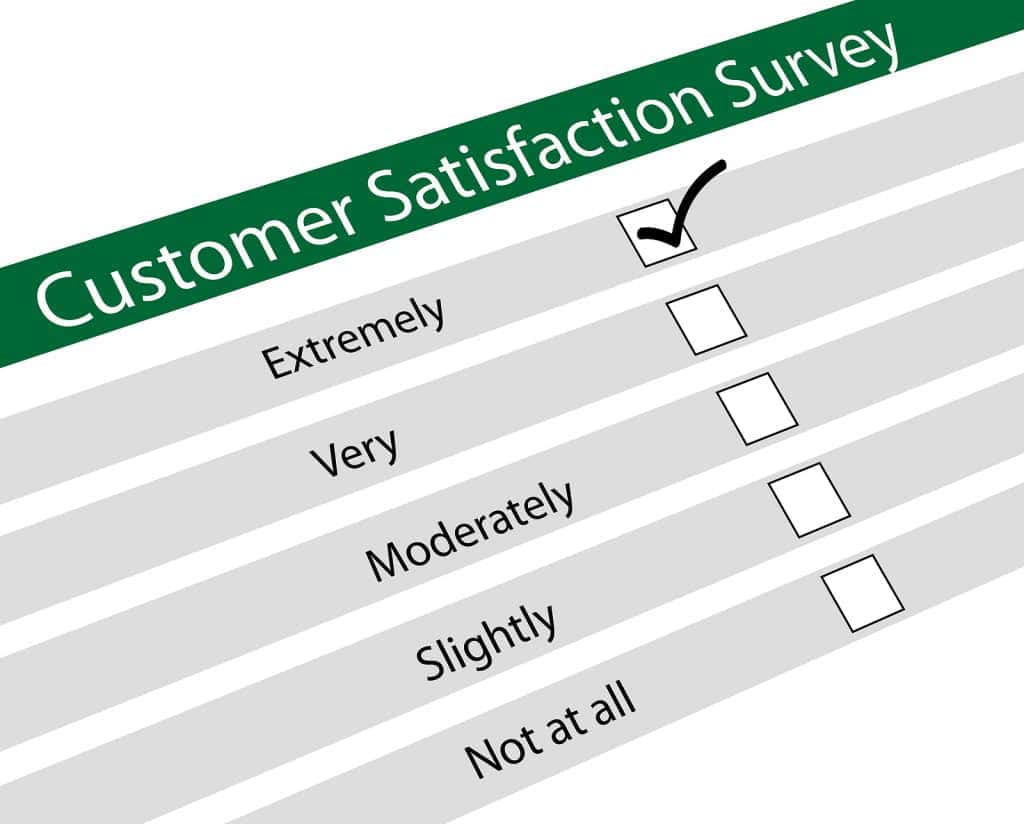Customer satisfaction is defined as a measurement that determines how happy customers are with a company’s products, services, and capabilities. Using this definition of customer satisfaction, the information gathered about how satisfied customers are, including surveys, feedback, and ratings can help an organization determine how to best improve or change its products or services, including how it delivers customer service and customer support. Satisfaction should either meet or surpass a customer’s expectation. It is important because it provides an organization with metrics that they can use to manage and improve their businesses.

Customer Satisfaction Benefits
Here are some of the typical benefits:
- It leads to customers repurchasing from the organization.
- Satisfied customers tend to continue buying from the organization instead of from its competitors.
- High levels of satisfaction can differentiate between one organization and another.
- Customer churn is reduced, saving the cost and effort of the administration to retain customers.
- It increases the value that the customer receives throughout the lifetime of the relationship with the organization.
- A good reputation for customer satisfaction can attract new customers.
The Importance of Customer Satisfaction
The focus of every organization’s customer service goals should be on ensuring satisfied customers. Measuring satisfaction is important for every organization to understand how it is delivering customer service. The data and information should be gathered using tools and approaches including satisfaction surveys, focus groups, on-line feedback, and polling. The data and information can then be evaluated using formal methods, including Customer Satisfaction Score (CSAT), Customer Engagement Score (CES) and Net Promoter Score (NPS). Using these, any organization can assess the key indicators, including the customers overall satisfaction with the service that the organization delivers, satisfaction with the products, staying with the organization, recommending the organization to others, and the likelihood of further purchases.
When assessing customer satisfaction, organizations should not just assume that they know what the customer thinks. Instead, it is important to elicit information directly from the customer about their satisfaction with the organization and its products and services. Using these tools and approaches, organizations can gain detailed insights as to what their customers want and better tailor their services or products to meet or exceed customer expectations.
How to Measure it
It is important to carefully design how you intend to measure satisfaction, so here are some tips. Surveys that take a long time to complete and contain ambiguous questions, or are complex to understand can harm overall satisfaction. Binary questions such as ‘Are you satisfied? Answer Yes or No’ will not give a reliable assessment of satisfaction. Instead, consider asking customers to rate their satisfaction using a sliding scale from 1-10. Most customers perceive higher numbers to be better, so your scale should have 10 as the very highest level of satisfaction and 1 as the very lowest. A similar approach to measuring customer satisfaction that is often adopted is to use phrases instead of numbers as potential answers to satisfaction questions put to the customer. For example, the possible responses to a question ‘How satisfied are you with the products that we offer’ could be ‘Not satisfied’, ‘Partly satisfied’, ‘Mostly Satisfied’, and ‘Very satisfied’. This approach tends to give a more accurate assessment of satisfaction as it makes the customer think harder about their answer, instead of just picking a position on a sliding scale.
Summary:
What is Customer Satisfaction?
Customer satisfaction is defined as a measurement that determines how happy customers are with a company’s products, services, and capabilities. It is important because it provides an organization with metrics that they can use to manage and improve their businesses. The focus of every organization’s customer service goals should be on ensuring satisfied customers. Measuring satisfaction is important for every organization to understand how it is delivering customer service. The data and information should be gathered using tools and approaches including satisfaction surveys, focus groups, on-line feedback, and polling. Consider asking customers to rate their satisfaction using a sliding scale from 1-10. Most customers perceive higher numbers to be better, so your scale should have 10 as the very highest level of satisfaction and 1 as the very lowest.
